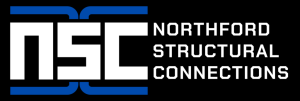DTFC: Designed for Vehicular Fatigue Loading
In the realm of civil engineering and infrastructure development, one critical aspect that cannot be overlooked is fatigue loading, particularly when it comes to roadways and bridges subjected to vehicular traffic. A relatively recent and innovative solution to this challenge is the implementation of DTFC, or Durability Tested Fiber Composite. This engineering approach allows structures to withstand the rigors of constant vehicular strain, ensuring safety and longevity in public infrastructure.
Understanding Vehicular Fatigue Loading
Vehicular fatigue loading refers to the repetitive stress exerted on road surfaces and supporting structures by moving traffic over time. As vehicles pass over roadways, they apply forces that can lead to material degradation and structural failure. This phenomenon is exacerbated by factors like vehicle weight, speed, road surface quality, and climate conditions.
The Mechanics Behind Fatigue Loading
When a vehicle travels on a roadway, it exerts dynamic loads due to acceleration, braking, and turning. These loads are not static; they fluctuate with varying traffic conditions. Over time, this continuous loading can create micro-cracks and fissures in the materials, leading to significant deterioration. Understanding the mechanics of fatigue loading helps engineers design better materials and constructions that can withstand these stresses.
Introduction to DTFC
DTFC is a cutting-edge material designed explicitly for superior performance under conditions of vehicular fatigue loading. Incorporating advanced composite materials, DTFC products are engineered to offer enhanced durability, flexibility, and strength. This makes them an ideal choice for modern roadways and bridges that experience high levels of traffic.
The Components of DTFC
DTFC typically consists of a combination of high-strength fibers and resins. These components work together to create a material that exhibits impressive tensile strength and fatigue resistance. The fibers provide reinforcement, while the resins bind the materials and offer protection against environmental factors.
Types of Fiber Used in DTFC
- Carbon Fibers: Known for their exceptional strength-to-weight ratio, carbon fibers are ideal for applications requiring high stiffness and low weight.
- Glass Fibers: These are commonly used for their versatility and cost-effectiveness, providing substantial tensile strength.
- Bamboo Fibers: An emerging sustainable option, bamboo fibers offer environmental benefits while maintaining robust mechanical properties.
Benefits of DTFC in Roadway and Bridge Construction
The adoption of DTFC technology offers several significant advantages for handling fatigue loading in vehicular traffic environments.
Enhanced Durability
DTFC materials resist cracking and deformation over prolonged exposure to harsh conditions. Their ability to absorb and dissipate energy helps reduce the risk of structural failure. This durability translates to lower maintenance costs and reduced need for repairs, ultimately extending the lifespan of infrastructural projects.
Cost-Effectiveness
While the initial investment in DTFC may be higher than traditional materials, the long-term savings from reduced maintenance and reconstruction costs are substantial. Fewer repairs and longer service life make DTFC a financially sound option for municipalities and government agencies.
Environmental Impact
Incorporating sustainable fibers like bamboo into DTFC can lower the carbon footprint associated with construction. Additionally, the extended lifespan of materials means reduced resource consumption over time. This aspect aligns with many regions’ goals to promote sustainable infrastructure.
DTFC Applications
The use of DTFC is becoming increasingly prevalent in various sectors, particularly in roads and bridges facing significant fatigue loading from vehicular traffic.
Highway Construction
In highways, DTFC can enhance pavement designs, allowing them to better withstand heavy trucks and constant traffic flow. Researchers are investigating the use of DTFC in asphalt and concrete mixtures to improve their resilience.
Bridge Reinforcement
Bridges are critical assets that experience substantial loading from vehicles. Incorporating DTFC into bridge design enhances their stability and performance. This is particularly true in areas prone to extreme weather conditions, where traditional materials may fail more rapidly.
Case Studies of DTFC Implementation
Several projects around the world demonstrate the benefits of DTFC in mitigating fatigue loading.
Project Example 1: Urban Bridge Replacement
An urban bridge in a high-traffic city was reconstructed using DTFC. Engineers reported reduced strain and cracking during heavy traffic periods. The longitudinal studies showed a notable decrease in maintenance requirements over time.
Project Example 2: Highway Rehabilitation
A highway rehabilitated with DTFC-integrated materials exhibited significantly improved surface durability. Road wear was lower than that observed in previous projects using conventional asphalt. This success led to additional funding for similar projects across the region.
The Future of DTFC in Infrastructure
As cities continue to grow and vehicular traffic increases, the need for durable and efficient materials is becoming even more critical. DTFC represents a significant advancement in technology aimed at addressing these challenges.
Ongoing Research and Development
Researchers are continuously working to improve the properties of DTFC materials. Enhancements in fiber technology, as well as the integration of smart sensors, promise even greater capabilities in terms of monitoring and maintaining infrastructure.
The Role of Policy Investment
Government investment in innovative materials like DTFC is essential for future infrastructure projects. Policy makers need to recognize the long-term benefits they bring and allocate funding for their widespread implementation. This collaboration can lead to safer, more sustainable transportation systems.
Conclusion
In conclusion, the utilization of DTFC is a promising solution to the challenges posed by fatigue loading due to vehicular traffic. Its enhanced durability, cost-effectiveness, and environmental benefits position it as an important component in modern infrastructure development. As technology and materials evolve, DTFC stands at the forefront of ensuring that our roads and bridges can safely accommodate the demands of contemporary society.







